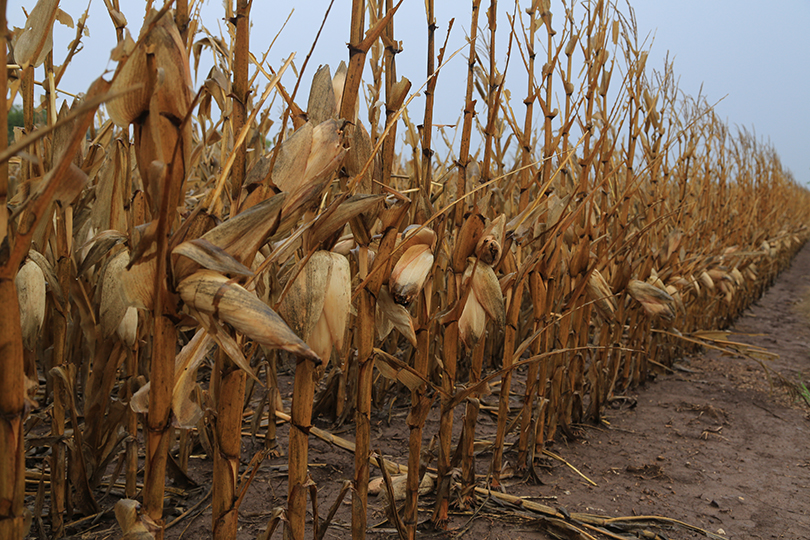By Kay Ledbetter
Texas A&M AgriLife Extension
Texas A&M AgriLife officials are offering some best management practices for farmers to keep in mind as harvest continues and for next year after fumonisin contamination has been found in truckloads of corn across the Texas High Plains.
Dr. Tom Isakeit, Texas A&M AgriLife Extension Service plant pathologist in College Station, said this year nothing can be done to minimize fumonisin already present in the standing crop. Farmers, however, can make a few changes during harvest to possibly reduce the amount of contaminated grain collected.
“You can adjust the combine settings to kick out the smaller grain kernels that tend to have much higher levels of contamination of fumonisin,” Isakeit said.
Fumonisin toxin is produced when certain Fusarium fungi are present on the corn, although not all Fusarium-infected kernels will have fumonisin, he said. Fumonisin can cause illnesses in livestock, especially horses, so there are regulatory limits to the amounts corn can contain. The only way to know if the toxin is present is to have a chemical test run.
But there are visible symptoms of the fungal infection, including a white discoloration of the kernels, and when they dry down, they will be smaller or lighter than the healthy kernels, Isakeit said.
The severity can be lessened by cleaning the seed or separating the damaged kernels out, he said. Sometimes just a few kernels can cause the higher concentrations. And though it is not done much in Texas, artificially drying the corn from a high moisture of 24 percent to 15 percent in a 24-hour period can also minimize contamination.
Optimum levels of fumonisin production occur between 18-20 percent moisture.
Also, farmers should segregate portions of the field if there was moisture stress, keeping corn from the drought-stressed areas of the field separate from the rest of the field, Isakeit said.
“The worst damage generally occurs around the edges of the field,” he said. “What you find on the outside for fumonisin contamination might not be what you find in the middle of the field.”
Isakeit also warned that putting corn into storage won’t get rid of the fumonisin contamination, but high levels of moisture or some leakage after placement in bins can add to the problem.
“For storage, you want to have your corn dry and keep it dry,” he said. “Make sure the bins are operated properly and are well ventilated.”
Beyond this year, Isakeit and Dr. Wenwei Xu, Texas A&M AgriLife Research corn breeder in Lubbock, offered some management practices that could help possibly control the problem in the future.
Both said there is no product available that can be applied to prevent fumonisin, so minimizing the contamination in the future will require a combination of hybrid selection and cultural practices.
Isakeit said farmers should pay close attention to any hybrid differences out in fields this year, adding “that might be the very least we can do now.”
Xu said there is a clear difference in terms of Fusarium fungus infection among hybrids, and there is a clear difference in terms of susceptibility to common smut.
Resistance to Fusarium fungus disease, common smut and earworm damage are all factors that should play into hybrid selection, he said.
“If a hybrid is susceptible to these, it doesn’t mean every field will be severe, but it can be elevated in bad years and the kernel damage under different environmental conditions can lead to more contamination,” Xu said.
“Based on my observations and conversations with farmers, you can find the problem in both dryland and irrigated corn and short-season to full-season corn,” he said. “It varies from field to field, and the hybrid, growth management, hot temperatures and drought stress will determine the severity. Farmers need to be paying attention to the factors that contributed to high fumonisin contamination this year when selecting their hybrid next year.”
Hybrids less prone to loss of kernel integrity should be planted, Isakeit said.
In 2008, there was an outbreak of fumonisin in this the High Plains and loss of kernel integrity was associated with hybrids that had problems with contamination, according to Dr. Gary Odvody, AgriLife Research plant pathologist, Corpus Christi. This loss of kernel inte

